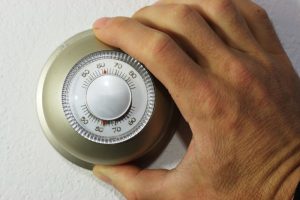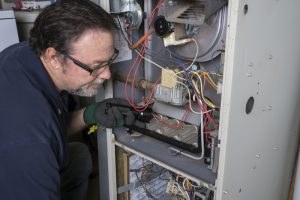 Imagine it’s the coldest day of winter, and you want into your home after a long day out to discover it’s practically no warmer inside than it was outside. Fortunately, you won’t have to deal with chilly temperatures for very much longer at the time of this blog post. But that certainly doesn’t mean you should neglect any signs you need furnace repair.
Imagine it’s the coldest day of winter, and you want into your home after a long day out to discover it’s practically no warmer inside than it was outside. Fortunately, you won’t have to deal with chilly temperatures for very much longer at the time of this blog post. But that certainly doesn’t mean you should neglect any signs you need furnace repair.
Holding off on furnace repairs could mean you find yourself facing a severe problem with the system by the end of winter, potentially even in the form of a premature breakdown. But how can you tell if your furnace needs repair?

 We are pretty fortunate in our area that we don’t have to deal with the severely cold temperatures that homeowners contend with throughout other parts of the country. As a result, you don’t have to worry about your heating system too much, right? However, even if our heater usage is relatively brief, don’t you want to do everything possible to save energy, and subsequently, money?
We are pretty fortunate in our area that we don’t have to deal with the severely cold temperatures that homeowners contend with throughout other parts of the country. As a result, you don’t have to worry about your heating system too much, right? However, even if our heater usage is relatively brief, don’t you want to do everything possible to save energy, and subsequently, money? Are you worried that your furnace system might break down at any moment? If you skipped maintenance this year, and/or you don’t know the signs that your furnace needs repair, then we understand the worry.
Are you worried that your furnace system might break down at any moment? If you skipped maintenance this year, and/or you don’t know the signs that your furnace needs repair, then we understand the worry. The short answer to this is, “no.” No matter what type of thermostat you have and how professionally installed it is, it cannot directly prevent furnace problems. What the right thermostat can do, however, is help you use your furnace more efficiently, preventing high energy costs—which is just as important!
The short answer to this is, “no.” No matter what type of thermostat you have and how professionally installed it is, it cannot directly prevent furnace problems. What the right thermostat can do, however, is help you use your furnace more efficiently, preventing high energy costs—which is just as important! How do you prepare your heating and cooling systems for their respective seasons? Without argument, the best way to do this is by scheduling routine system maintenance. Maintenance tune-ups give our pros the chance to fully inspect your system, making any adjustments needed, cleaning the unit, and alerting you to any repair needs that exist. The best time to have this done is typically in the fall for your heater and in the spring for your air conditioner—but it’s actually more important that you have in done regularly, no matter the time of year.
How do you prepare your heating and cooling systems for their respective seasons? Without argument, the best way to do this is by scheduling routine system maintenance. Maintenance tune-ups give our pros the chance to fully inspect your system, making any adjustments needed, cleaning the unit, and alerting you to any repair needs that exist. The best time to have this done is typically in the fall for your heater and in the spring for your air conditioner—but it’s actually more important that you have in done regularly, no matter the time of year. Here’s what would happen in a perfect world. You’d turn on your furnace, and a few minutes later you’d hear the familiar whirring of the fan within the system. The reason it takes a few minutes is because the heat exchangers actually have to heat up from the burners, and the fan won’t start going until that happens. Once you hear that whirring, though, you’re satisfied knowing that comfortable warmth is about to come flowing into your home through the vents.
Here’s what would happen in a perfect world. You’d turn on your furnace, and a few minutes later you’d hear the familiar whirring of the fan within the system. The reason it takes a few minutes is because the heat exchangers actually have to heat up from the burners, and the fan won’t start going until that happens. Once you hear that whirring, though, you’re satisfied knowing that comfortable warmth is about to come flowing into your home through the vents.